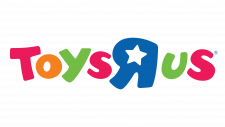Uber Eats Logo
Uber Eats, a subsidiary of Uber Technologies, is currently a major player in the food delivery sector. It operates across numerous global markets, facilitating food orders and deliveries from a multitude of local restaurants to users via its app. The service is noted for its convenience and range of choices, allowing consumers to explore diverse culinary options. Uber Technologies, a publicly traded company, owns and oversees Uber Eats, continuing to innovate in the realm of logistics and food delivery to cater to the evolving needs and preferences of its extensive user base.
Meaning and history
Uber Eats, launched in 2014 as UberFRESH in Santa Monica, has evolved substantially. Initially, it was a lunchtime meal delivery service, later expanding its menu and rebranding to Uber Eats in 2015. The platform quickly grew, working with a myriad of restaurants, allowing users to order food using the same app they use to book rides. Owned by Uber Technologies Inc., it hasn’t undergone any ownership changes but has continually refined its operational strategies and market approach. It has expanded into numerous international markets, adopting local cuisines and forging partnerships with local restaurants, ensuring the diversification of its service. Its rapid ascent in the food delivery sector illustrates the constant evolution and adaptation in its business model to meet the diverse and changing consumer needs and preferences, providing convenience and variety in the ever-competitive food delivery landscape.
2014 – 2015
Prior to adopting the Uber Eats moniker, the culinary dispatch service was known under the designation of UberFRESH. The logo bore the appellation in a contrasting black hue, wherein the initial quartet of letters was depicted in lowercase, with the ensuing characters in uppercase. The typography selected by the creators was notable for its pristine structures, sleek, curvilinear strokes with uniform thickness, and devoid of any serifs at the terminations. The deliberate choice of the visual elements aimed to communicate a sense of modernity and simplicity, aligning the brand identity with the innovative and user-friendly nature of the service.
2015 – 2016
Under the newly minted name of Uber Eats, the digital service evolved to attain autonomy, boasting its distinct app and website, which facilitate users in executing their orders. It sports a distinctive emblem, marked by a trident fork encased within a circle, poised against a white backdrop, conferring a heightened brand recall. The icon is crafted using a continuous slender line, delineating both the eating utensil and the metaphorical circular “dish.” The brand’s moniker is inscribed below, presented in dual lines, with each term rendered in its specific hue. This thoughtful design reinforces the brand’s identity, emphasizing its unique approach to providing convenient and reliable food delivery services, ensuring user-friendly interactions and broad accessibility. The amalgamation of subtle design elements accentuates the brand’s ethos of simplicity and efficiency, resonating with the diverse palette of the contemporary consumer base.
2016 – 2017
The form of the logo remains intact; however, modifications are evident in its color scheme and typography. Blue has yielded to green, and the slender font has transitioned to a bold typeface. These alterations in design elements reflect a nuanced approach to visual identity, emphasizing the brand’s adaptability and its commitment to staying relevant in a dynamic market environment. The bold characters underscore a sense of assertiveness and visibility, while the shift to green symbolizes growth, renewal, and vitality, aligning with the evolving aspirations and values of the brand and its diverse consumer base.
2017 – 2018
In this rendition of the logo, every element from the preceding versions has been reimagined, marking a profound transformation. The creators omitted the signature circular icon, concentrating solely on the name of the food dispatch firm. The term “eats” has been accentuated and transcribed in lowercase, emerging prominently. In contrast, the notation “Uber” is relatively diminutive and inconspicuous, occupying merely the space of two characters – “ea.” The green utilized is now more vibrant and rich. This shift in design philosophy underscores a fresh perspective, focusing on simplicity and modernity, and brings the essence of the service into a sharper, more focused realization. The emphasis on “eats” subtly shifts the brand perception, underscoring the culinary aspect of the service while maintaining a connection to the parent brand through the residual “Uber” element, albeit minimized. The saturation of the green encapsulates the zest and vitality inherent in the culinary world, echoing the vibrant diversity of cuisines available through the service.
2018 – 2020
The creators aligned the term “Uber Eats” linearly, assigning a deep green shade to the first word and a lighter green to the second. This deliberate choice in color variance and layout brings forth a sense of visual harmony and distinction between the brand name and its service offering. The utilization of different green shades is indicative of the brand’s commitment to freshness and quality, resonating with the culinary ethos. The unified, horizontal arrangement of the text suggests coherence and ease of recognition, essential elements in establishing a robust visual identity in the competitive food delivery landscape. The intentional contrast in color also aids in retaining the attention of the observer, subtly emphasizing the essence of the service – ‘Eats’, making the logo not just a visual element but a communication tool.
2020 – Today
To capture the gaze of prospective clients, the executive team of the company opted to transform the hue of the “Eats” inscription to a green-aquamarine. This vibrant adjustment was intended to resonate more strongly with potential users by presenting a visually appealing and distinctive look. The other components of the design were left intact, maintaining their original form and structure. This subtle, yet impactful alteration was a strategic maneuver to balance brand continuity with a refreshed, contemporary aesthetic. It was crucial for the brand to project evolution while remaining consistent in its visual communication, ensuring that the essence and the values of the service are continuously echoed in every interaction. The blend of familiarity with a touch of novelty serves to intrigue and engage the consumer base, fostering a connection between the service and its users.

















